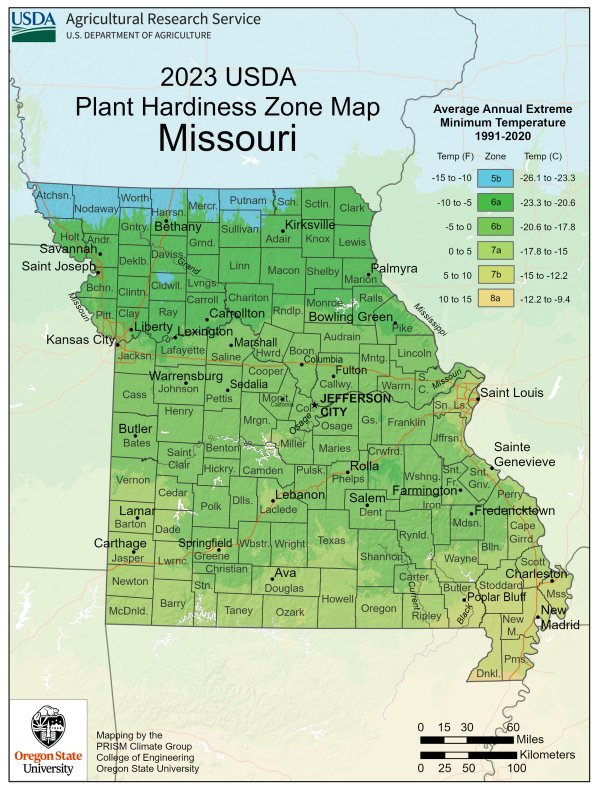
Missouri sees changes in updated plant hardiness zone map
Linda Geist
Writer
University of Missouri Extension
Phone: 573-882-9185
Email: GeistLi@missouri.edu
Monday, November 20, 2023
KANSAS CITY, Mo. - Missouri gardeners will find new guidelines in the updated USDA plant hardiness zone map.
The map helps growers zero in on which vegetables and flowers will do best in different parts of the state, says University of Missouri Extension horticulturist Tamra Reall.
Perennial flowers and bushes can a big investment, Reall says. The map helps reduce the risk of choosing plants that might not survive local temperature extremes, she says.
USDA Agricultural Research Service's map is based on annual extreme minimum winter temperatures, says MU Extension climatologist Zack Leasor. The minimums are an average of the lower recorded temperature each year from 1991 to 2020.
The zone map is a standard for gardeners and growers to determine the right plant to grow in the right place at the right time of year. The map divides the U.S. into 13 zones based on extreme minimum winter temperature increments of 10 degrees Fahrenheit. Each zone is further divided into 5-degree half zones. Most seed packets and shrub or plant labels will indicate hardiness zone.
The new map breaks Missouri down into five hardiness zones: 5b, 6a, 6b, 7a and 7b. Most of the state falls into zones 6a (minus 10 F to minus 5 F) and 6b (minus 5 F to zero F).
The 2023 map incorporates data from 13,412 weather stations, up from 7,983 stations for the 2012 map, Leasor says. Compared to the 2012 map, Missouri shows considerable warming and a change in the hardiness zones, particularly in the northern and central parts of the state.
"Some of these changes reflect an observed trend of warming minimum temperatures in Missouri, but the inclusion of new station observations also influences the map by illustrating more localized patterns with better confidence," he says.
"When buying an expensive or sentimental plant, err on the side of caution and lean toward more cold-hardy options," Reall says. This means that if you live in an area that is zoned 6b, look for plants rated zone 5a or 5b, which can better tolerate extreme cold snaps, she says.
The map is available at planthardiness.ars.usda.gov. In addition to the national map, users can view and download maps for individual regions and states/territories.
The USDA Plant Hardiness Zone Map website now includes a "Tips for Growers" section, which has information about USDA research programs of interest to gardeners and others who grow and breed plants.
Image available for this release:

2023 plant hardiness zone map for Missouri.
Source: Tamra Reall, 816-945-8113; Zach Leasor, 573-882-5908












